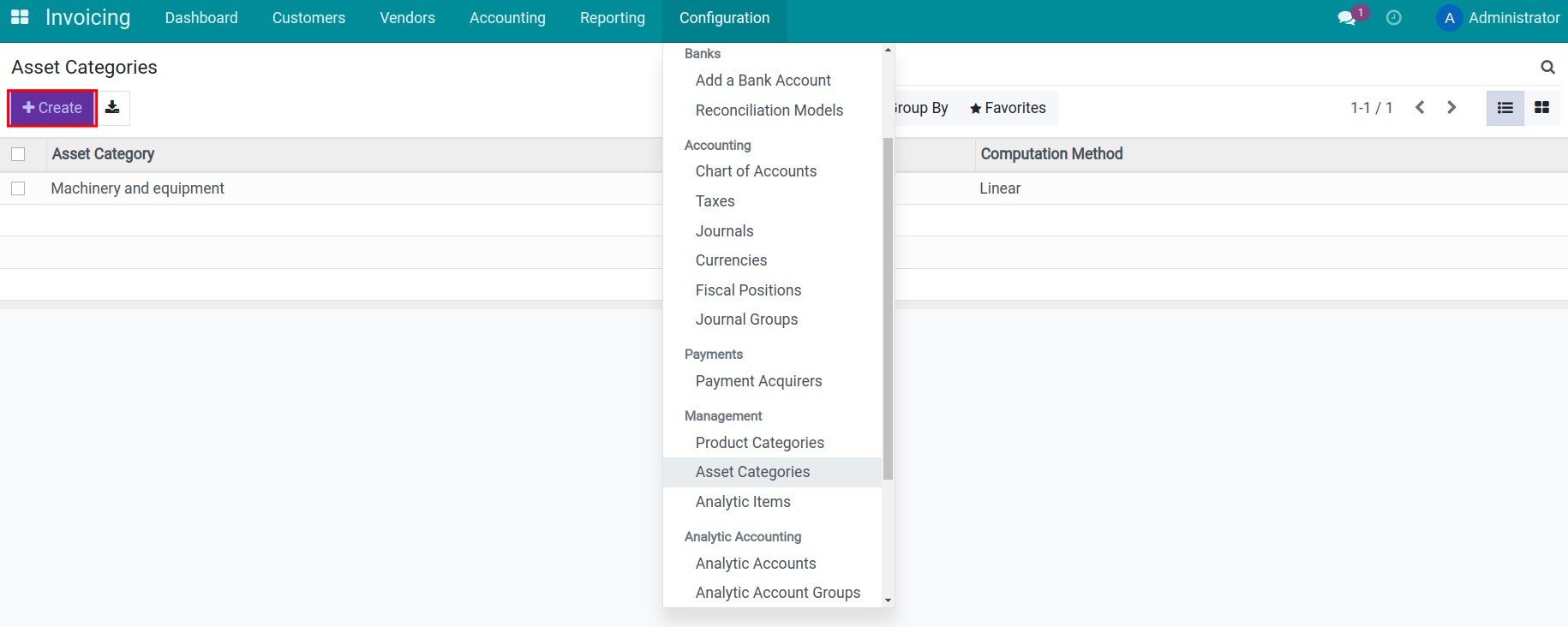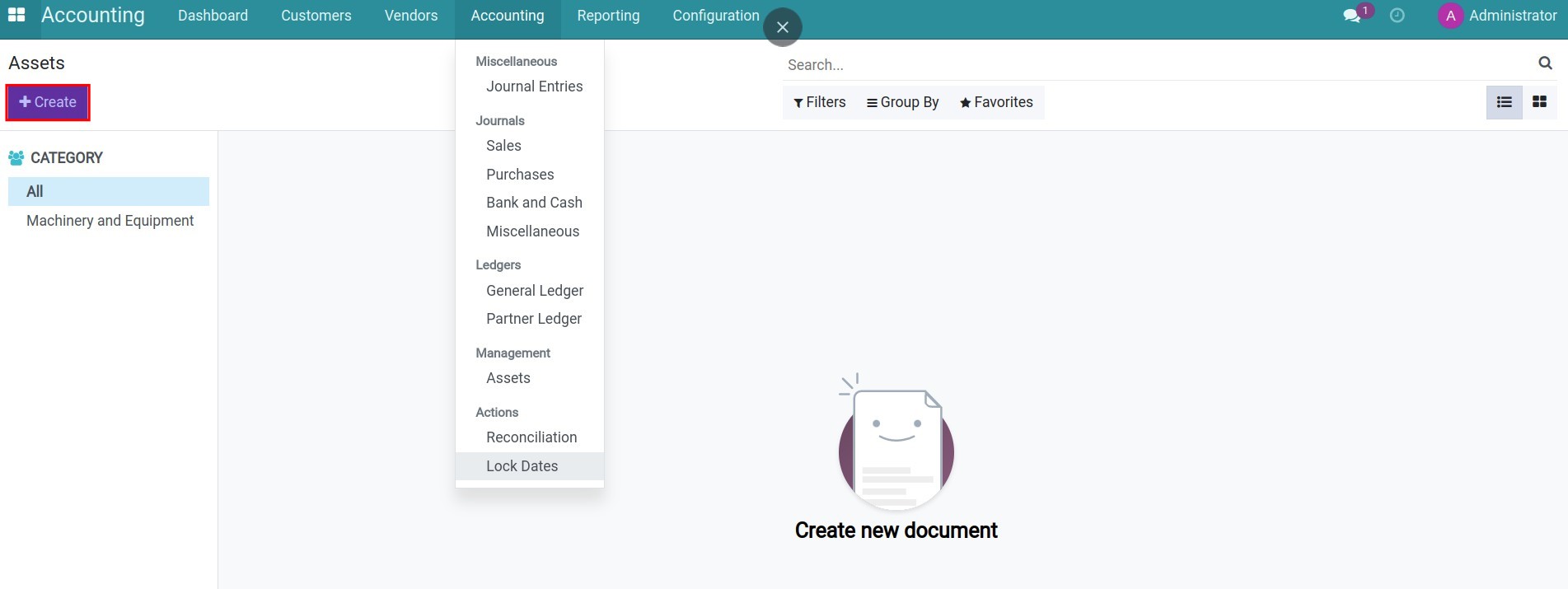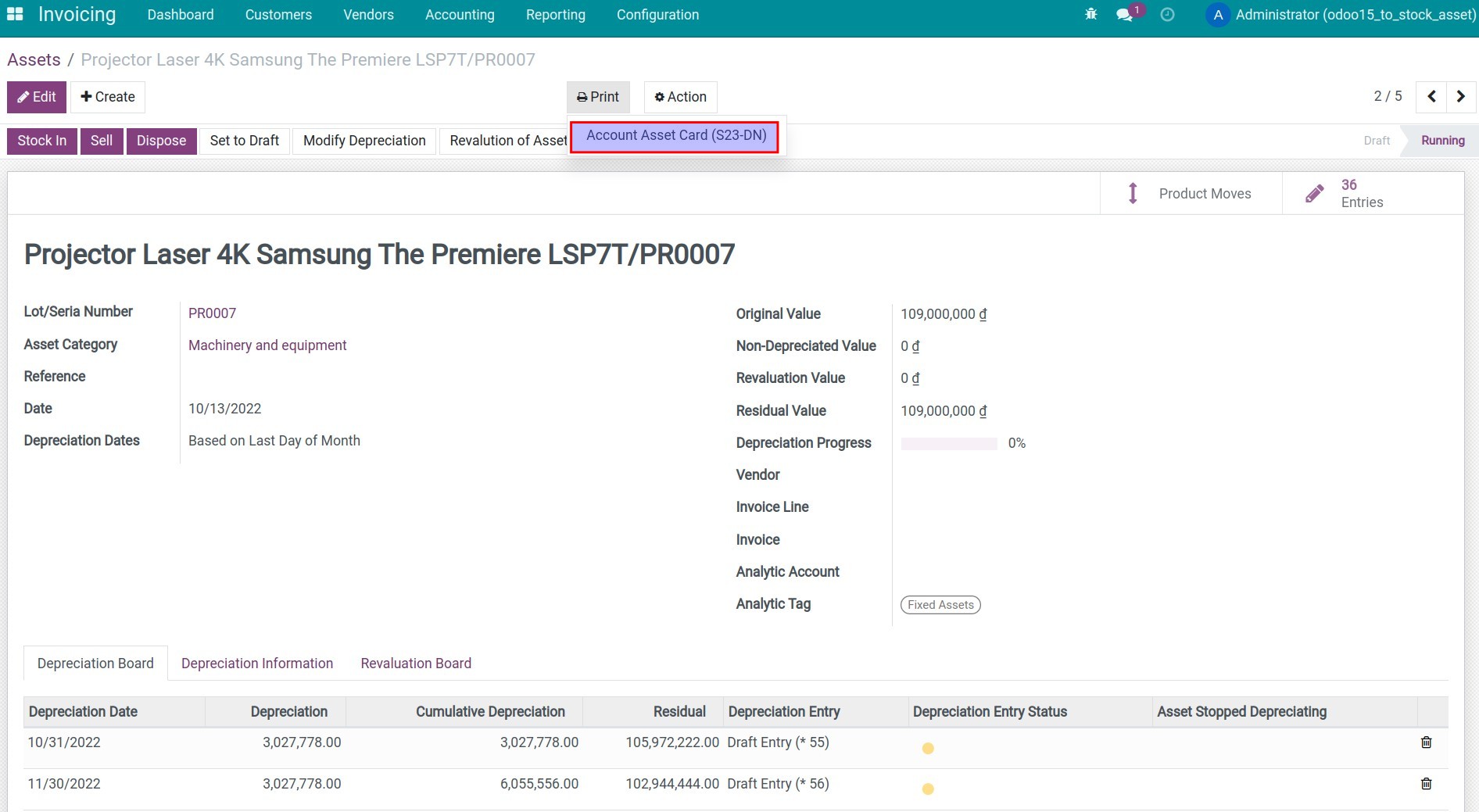Demo video: Vietnam - Account Asset
Key Features:
- Fix depreciation computation according to Vietnam Accounting Standards.
- Support assets sold/disposed in the way in compliance with VAS.
- Support printing Accounting Asset Card (S23-DN) of Financial Ministery.
- Support attach analytic tags on the journal items in order to build up the financial report as Vietnam Accounting Standards (VAS).
Example of a Full Process Demonstration (with sale/disposal activity)
Assumes the asset is purchased at the price of 1200 (in company currency).
1. Validate Vendor Bill when purchase Asset:
2. Payment:
3. Move asset into stock:
4. Asset Depreciation:
5. Asset Disposal/Sale:
6. Validate Customer Invoice (assume sold at 2000 VND):
7. Payment:
8. Asset Out from the Stock:
Balance:
- 811: 1100 (debit)
- 214: 0
- 211: 0
- 711: 2000 (credit)
- 151: 0
- 131: 0
- 331: 0
- 111: 800 (debit)
- 642: 100 (debit)
Editions Supported
- Community Edition
Installation
- Navigate to Apps.
- Search with keyword l10n_vn_viin_account_asset.
- Press Install.
Instruction
Instruction video: Vietnam - Account Asset
Step 1: Configure accounting accounts and depreciation method for the Asset Categories as Vietnam Accounting Standards (VAS).

Step 2: Create an asset and configure depreciation information.

Step 3: Print Account Asset Card (S23-DN).

Note:
To create an asset category, you need to go to the Invoicing app > Configuration > Settings, search and activate Analytic Accounting feature.
After installing module l10n_vn_viin_account_asset, the system will automatically create some of the analytic tags. They are attached to the journal items in order to gather data on the financial statements as VAS.
- Example: Your company buys a computer with a value of 10.000.000 VND. It is allocated to an employee.
Journal entry as follows:
Debit 242: 10.000.000 (Analytic tag is Long-term prepaid expenses)
Credit 331: 10.000.000
This software and associated files (the "Software") may only be
used
(executed, modified, executed after modifications) if you have
purchased a
valid license from the authors, typically via Odoo Apps,
or if you
have
received a written agreement from the authors of the
Software (see the
COPYRIGHT file).
You may develop Odoo modules that use the Software as a library
(typically
by depending on it, importing it and using its
resources), but
without
copying any source code or material from the
Software. You may distribute
those modules under the license of your
choice, provided that this
license
is compatible with the terms of
the Odoo Proprietary License (For
example:
LGPL, MIT, or proprietary
licenses similar to this one).
It is forbidden to publish, distribute, sublicense, or sell
copies of the
Software or modified copies of the Software.
The above copyright notice and this permission notice must be
included in
all copies or substantial portions of the Software.
THE SOFTWARE IS PROVIDED "AS IS", WITHOUT WARRANTY OF ANY KIND,
EXPRESS OR
IMPLIED, INCLUDING BUT NOT LIMITED TO THE WARRANTIES OF
MERCHANTABILITY,
FITNESS FOR A PARTICULAR PURPOSE AND
NONINFRINGEMENT. IN NO EVENT
SHALL THE
AUTHORS OR COPYRIGHT HOLDERS
BE LIABLE FOR ANY CLAIM, DAMAGES OR OTHER
LIABILITY, WHETHER IN AN
ACTION OF CONTRACT, TORT OR OTHERWISE,
ARISING
FROM, OUT OF OR IN
CONNECTION WITH THE SOFTWARE OR THE USE OR OTHER
DEALINGS IN THE
SOFTWARE.




